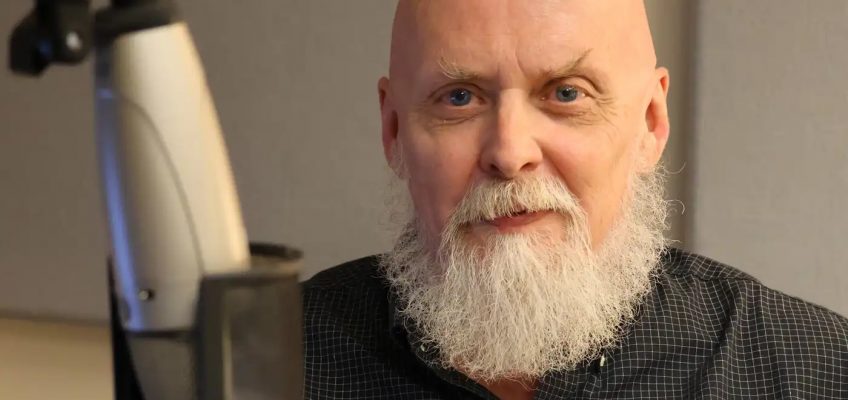MEDIA
Dan Gunderson
Minnesota Public Radio, St. Paul, announced the planned retirement of Moorhead-based correspondent Dan Gunderson, after 38 years with the organization.
ENERGY
The American Petroleum Institute announced Julian Cavin, CEO of Low Fuel in Brooklyn Park, and Jeff Anderson, co-owner and president of ATEK Distribution in Minneapolis, completed its six-month Blue Wave Supplier Development Program, a national initiative that helps small businesses meet industry safety and compliance.
FOOD
Hormel Foods Corp., an Austin, Minn.-based provider of grocery store prepared food brands, announced the planned retirement of PJ Connor, group vice president of Retail sales. Natosha Walsh, a 26-year company veteran and vice president of Retail sales – West, will succeed Connor upon his retirement. Conner’s retirement will coincide with his 30-year anniversary with the company this spring.
GOVERNMENT
The Minnesota Department of Commerce announced that Sara Payne has been appointed assistant commissioner of enforcement, effective Nov. 19, overseeing civil enforcement operations, including multi-industry, real estate, insurance and market conduct and the Consumer Service Center. Payne joined Commerce in 2016 as an attorney and has served as general counsel since 2021. Payne succeeds Jacqueline Olson, who served as assistant commissioner since January 2023. …The Minnesota Department of Veterans Affairs announced the appointment of Diane Lynch-deCombhs as assistant commissioner – Healthcare Division, a new position, effective Nov. 3. Lynch-deCombhs most recently held the role of division administrator of veterans homes for the state of Wisconsin and in the private sector led senior care campuses including rehab centers and skilled nursing facilities; she also is president of the National Association of State Veterans Homes.
HONORS
Washington County announced that Commissioner and Board Chair Stan Karwoski, District 2, received the Minnesota Transportation Alliance’s Transportation Advocate Award for his work on Minnesota’s transportation infrastructure. … The Agricultural Utilization Research Institute, a Crookston-based nonprofit, announced StableFeed, a Kasson, Minn., equine feed and supplement company, as the winner of its annual Ag Innovator of the Year award. … Brainerd Community Action recognized Mark Cross as this year’s Community Service Provider of the Year.
LAW
Maslon, Minneapolis, announced the addition of attorney Jeremy Walls as an associate in the firm’s Corporate & Securities Group. Prior to joining Maslon, was with Winthrop & Weinstine. … Fredrikson, Minneapolis, announced the addition of attorney Logan R. Hamilton to the firm’s Technology & Data Group. … Gov. Tim Walz announced the appointment of Ryan Bies as District Court Judge in Minnesota’s First Judicial District. Bies will succeed the Honorable Vicki Vial Taylor and will be chambered in Hastings in Dakota County. Bies is a shareholder at Dougherty, Molenda, Solfest, Hills & Bauer in Apple Valley, where he serves both private and municipal clients.
MANUFACTURING
Arctic Cat, a Thief River Falls-based snowmobile maker, announced the hire of Tony Henningson as chief financial officer. Henningson previously held leadership roles at Polaris, Genmar and KTM.
MILESTONES
Vistabule Teardrop Trailer, a 14-year-old St. Paul-based maker of towable recreational trailers, announced production and delivery of the company’s 1,000th trailer. … Minneapolis-based patent law firm Merchant & Gould announced it is celebrating its 125th anniversary.
OPENINGS
Walser Automotive Group, a Twin Cities-based chain of auto dealerships, announced the opening of Walser Kia, 15700 Wayzata Blvd., Minnetonka.
POLITICS
NewDEAL (Developing Exceptional American Leaders), a Washington, D.C,-based center-left policy organization, announced the addition of Minnesota State Sen. Grant Hauschild, DFL-Hermantown, to its 2025 class of state-level legislative members.
SERVICES
Fastenal Co., a Winona, Minn.-based tool and parts supplier to industry, announced it has appointed Max Tunnicliff as chief financial officer and senior executive vice president, effective Nov. 10. Tunnicliff most recently served as chief financial officer of Beko Europe, a leading home appliance business in Europe and also held senior finance leadership roles with Whirlpool Corp.
SPONSORHIPS
Fastenal, Winona, announced a multi-year partnership with the Edmonton Oilers NHL team, making Fastenal the preferred MRO (maintenance, repair, and operations) supply partner of Rogers Place, the Oilers’ home ice.
Business People: Former FDA chief Scott Gottlieb joins UnitedHealth board
Ramsey County CFO Alex Kotze named deputy county manager
Business People: Roxane Battle joins Women’s Foundation of Minnesota
Business People: Fredrikson attorney Mark Vyvyan honored for pro bono work
Former Irish on Grand employee buys building, opens new St. Paul store
EMAIL ITEMS to businessnews@pioneerpress.com.




